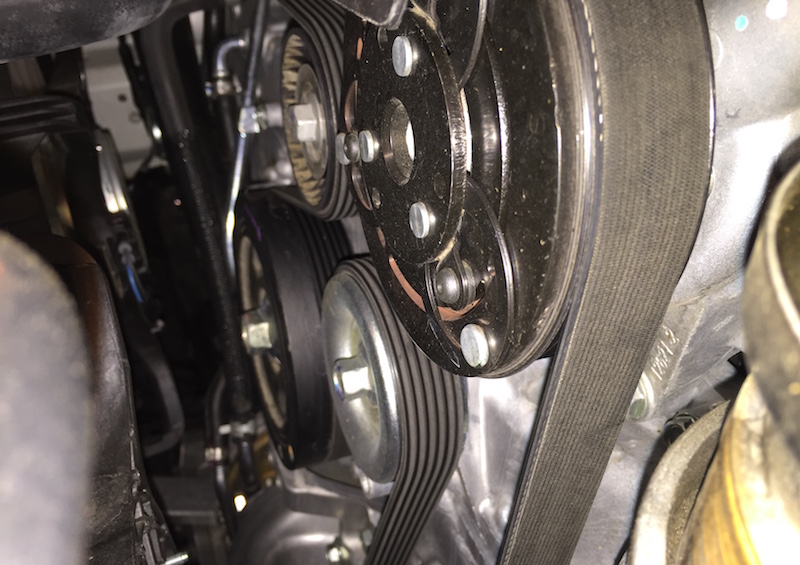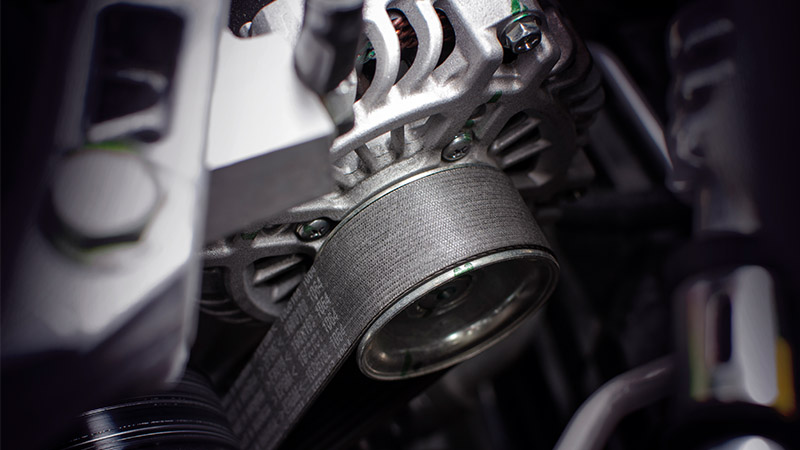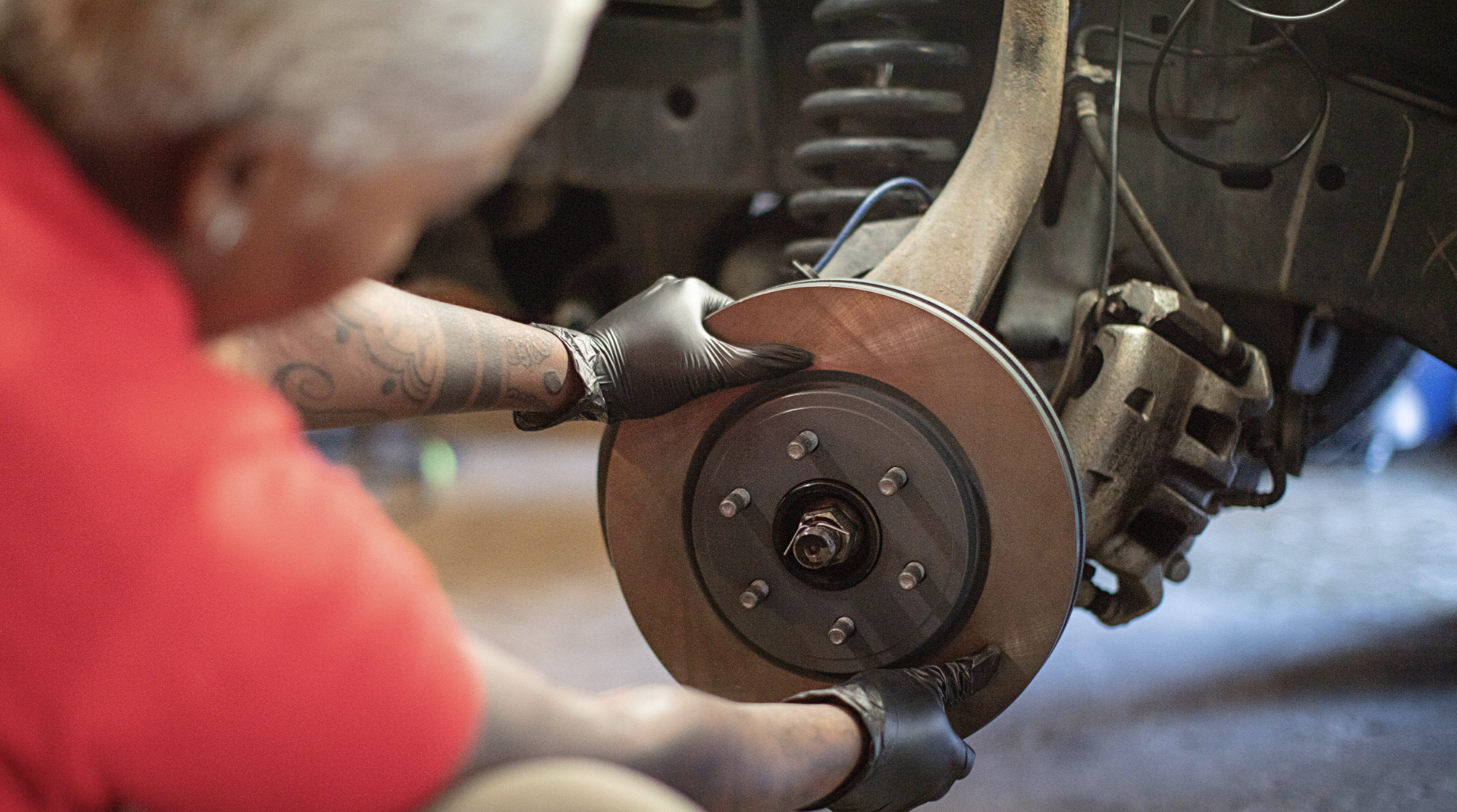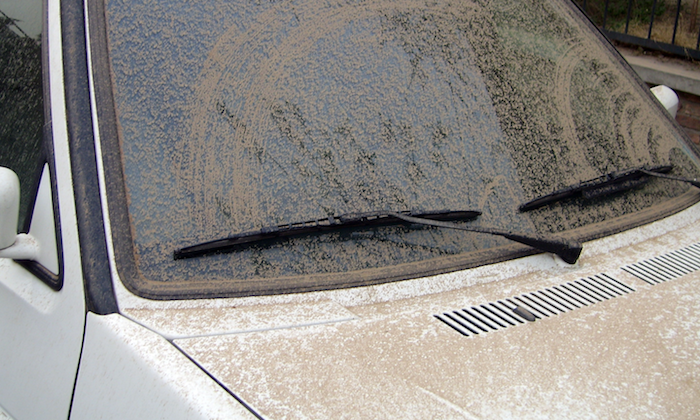Drive belts are a regular vehicle maintenance item. Loud squeals, poor battery charging, and even overheating are symptoms that should lead you to investigate the drive belts on your engine and potentially replace them. But before you begin the diagnostic process, make sure you know what kind of belts your car has.
The Different Types of Drive Belts

Source | Matthew Davis
Serpentine Belt
The serpentine belt is probably the most commonly used belt today and likely what you'll find under the hood of your car if you drive anything newer than a 1990 model. Need to change it? It's pretty simple. The belt snakes its way through multiple accessories, the crank pulley, an idler pulley or two, and a tensioner. Grab a socket and pull on the tensioner pulley to loosen the belt to remove it. Serpentine belts are easy to replace, but if they break, you're guaranteed to be on the side of the road since they run everything from your alternator to your power steering.
You'll know they need to be replaced if they begin to look heavily cracked or if the depth of the grooves becomes too shallow. A good rule of thumb is to check them around 60,000 miles and replace them by 90,000 miles. You can purchase an easy-to-use and inexpensive belt-wear gauge to check belt wear for a more scientific inspection.
Drive Belts & V-Belts

Drive belts, Source | Matthew Davis
Drive belts are usually found on older vehicles, but they do have advantages. Running off of the crank pulley, they go through one or two accessories but usually not more than that. On a car with all the bells and whistles, there will be several individual belts for power steering, air conditioning, and then the essentials like the alternator, water pump, and radiator fan. Break one of these, and depending on what it was driving, you may still be able to get home. Drive belts are also called V-belts because of the way their rubber teeth are tapered. The disadvantages to individual drive belts are the fact that there are multiple to change, they are a bit trickier to get to the right tension, and they can rotate on the pulley under hard load.
Loose drive belts will squeal and could cause your alternator to charge improperly and could possibly cause your car to overheat. A good way to test tension is to push down on the belt in the middle of its longest point. You should be able to depress it about half an inch. Any more than that and it's too loose; any less, and it's too tight. A belt that's too tight will put strain on the alternator and could ruin the bearings on the water pump. You'll know the belt needs replacing if it looks cracked or if tightening to the proper tension does not remedy the squeal.

Cracked belt, Source | Matthew Davis
Timing Belts
Most cars have interference engines, which means the clearance between the moving parts is so small that if they get out of time, they'll run into each other. The timing belt connects the crankshaft and camshaft, keeping them in sync. You'll likely not see the timing belt on your car because it's hidden behind the timing cover. Nevertheless, the timing belt can be your nemesis; ignore it, and you'll have a very expensive engine rebuild on your hands. Usually, these should be replaced every 60,000 to 90,000 miles. Like any belt, miles and time will cause them to crack like the one pictured here, and you'll have a very bad day if it breaks. Many cars have timing chains instead of belts, which are designed to last for the engine's lifespan.
Like anything on a car, extreme temperature ranges are the killers of longevity. It's always a good idea to inspect your belts at the beginning and end of winter and summer.
If you have experience dealing with belts, let us know. Leave your stories in the comments.







